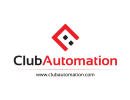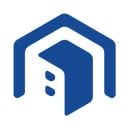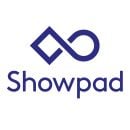According to HubSpot, happy customers are the top referral sources for companies. But turning a new client into a happy customer requires a successful customer onboarding strategy. If the experience isn’t well-executed, it’s not uncommon for a client to jump ship before even using a product.
Chicago professionals with years of experience onboarding new customers told us that starting off on the right foot requires education, personalization and making the program measurable.
“Implementing simple measures — like usage statistics, completing activities within a certain timeframe or monitoring communication frequency — is key to keeping customers on track,” Jess Lovell, VP of customer success at local tech company SPINS, said.
Clients’ needs — and thus, their onboarding — will look slightly different for every company, the following experts said. But no matter the business, customer-facing teams must ensure that clients are well-educated about why a product impacts their bottom line, and then deliver those results accordingly. When customer needs change, teams should be ready to adapt their onboarding strategies and ongoing training in order to foster long-term customer loyalty.
Effective onboarding strategies:
- Offer ongoing training
- Personalize onboarding toward client-specific solutions
- Be continuously available across a variety of channels
- Re-emphasize the value of the product
- Create and track measurements of success
- Celebrate milestones
- Be ready to adjust onboarding strategies to evolving customer needs

“Education is a core element of our success team’s mission,” said Jess Lovell, SPINS’ VP of customer success.
For leader at the food data company, it’s vital that customers are consistently aware of how the company’s solutions can help solve their specific business needs.
Keys to an engaging customer onboarding program: It’s important to ensure that a program, at minimum, answers two critical questions: What is the goal of onboarding and in what ways will the success of the program be measured? Clarity on purpose guides teams in the direction of what to do, but also what to avoid as customer programs evolve. Making sure the onboarding experience is tied to a set of defined outcomes helps maintain alignment and prevent scope creep, which can negatively impact the customer.
Second is making a program measurable. For those in a commercial software-as-a-service field, this is often measured in non-renewal of a contract. Implementing simple measures — like usage statistics, completing activities within a certain timeframe or monitoring communication frequency — is key to keeping customers on track. And teams should regularly report back on the measurements they find.
Moving a customer through the onboarding journey isn’t only about hitting check boxes.”
Improvements made to SPINS’ program: Our onboarding program was defined for two client segments. However, we realized that certain clients could fall on either side and their onboarding could be misaligned with their business goals. This discrepancy highlighted a need to expand the coverage of our program. Ensuring a more broad application of the program allowed us to unearth different use cases of our data across a wider group. We also stress-tested what we deemed as success criteria against the different business needs.
We are in the midst of enhancing our success measurements. We can now track areas of underutilization in our business intelligence platform to illuminate users that are missing potentially helpful solutions for common problems. This information helps us connect with the customer and get them access to what they need.
How to generate excitement through onboarding: Moving a customer through the onboarding journey isn’t only about hitting check boxes and completion rates. So it’s key that the language we use when interacting with clients encompasses our desire to educate. Every piece of the program is vital in that message, like including links to live, weekly training sessions or taking the time to walk through specific use cases. An educated customer is an empowered customer and that helps prevent apathy and disengagement.

When COVID-19 struck, Derek Baker said the customer team at Club Automation had to rework how they ramped health and wellness center customers. The implementation and delivery manager said teams adapted onboarding to educate customers on the features they needed most based on changing demands.
Keys to an engaging customer onboarding program: When creating our onboarding program, we had two principles that guided us: understanding the customer’s needs and meeting people where they are. Our team has always prioritized carving out time to understand the customer’s operations and goals. Having several scoping conversations helps achieve alignment before kick-off. It works to ensure the client is prepared for the implementation process and provides us with time to adjust the program to meet their needs.
Knowing that each person learns in their own unique way, we also structured our learning materials to meet those individual needs. Self-paced learning courses, training manuals, recorded training sessions, demo sites and instructor-led workshops are some of the many ways our program meets each user where they are.
Understanding our customers’ needs proved to be the best way to engage them.”
Improvements made to Club Automation’s program: We are continually improving our onboarding process based on the changing needs of our customers and the market. The pandemic shifted our customers’ needs overnight and our ability to implement was significantly hampered. We quickly reprioritized training that helped their needs of handling chargebacks, capacity restrictions, virtual appointments and communication with their clients. We also spun up 14 self-paced training courses that our customers could distribute to their staff to help ensure proper adoption of software remotely.
How to generate excitement through onboarding: There is a huge correlation between brand promoters and successful implementations. Our customers want their software provider to be a partner that can help drive efficiency and revenue for their organizations. The onboarding process is the foundation of that partnership. Our team works to earn a client’s trust and provide consulting so they can utilize Club Automation to its full potential. Understanding our customers’ needs proved to be the best way to engage them and transform new relationships into long-lasting partnerships.

“It’s important to ensure that all stakeholders know exactly what we will be doing, when we will be doing it, and how we will be doing it,” said Margaret Moltz, Buildout projects team manager.
For Moltz’s team, transparency, then making good on the proposed strategies, is a key part of onboarding at the real estate marketing platform.
Keys to an engaging customer onboarding program: The most critical action is getting our teams aligned as soon as possible, ideally during the kick-off call. This moment is when our projects team is introduced to the customer and passed off from our sales team. Alignment covers multiple areas including goals, first value, key use cases, roles and next steps. Onboarding is customized for all five of our customer segments.
Another important practice is expectation-setting, as this is when customers learn more about their involvement. They can identify and allocate the necessary resources on their end to begin the process.
We build trust by saying what we are going to do, then doing it.”
Improvements made to Buildout’s program: A simple yet impactful improvement has been collaborating with stakeholders with our project plan checklist. We can show customers how far they’ve come in onboarding by reviewing weekly call notes, and what steps remain. It has given our customers insight into the process to help them feel like they’ve made real progress.
Another improvement was calling the end of our onboarding process a “graduation,” which signals an important transition point in their lifecycle. When someone graduates from school in real life, they take with them what they have learned and use it everyday; that’s what we want our customers to do with Buildout.
How to generate excitement through onboarding: We build trust by saying what we are going to do, then doing it. We check in with customers to make sure their expectations are met while encouraging them to keep going.
If we do notice customers struggling during onboarding, we implemented ways to get them back on track depending on what is going on, like skipping calls, misaligned expectations or missing deadlines. Sometimes the solution is as simple as reframing the goals and expectations. Other times we work with leadership or steering committees to make a new plan or iterate on the current one. And a post-graduation survey allows us to continually iterate and improve our onboarding processes through customer feedback.

Personalized onboarding a foundational part of how teams at sales enablement platform Showpad help customers solve their challenges. U.S. Professional Services Manager Christina Sciarrotta said client success equates to the company’s success, so onboarding programs are both nimble and unique.
Keys to an engaging customer onboarding program: Our approach to onboarding new clients is centered on being tailored and flexible. While we have tried-and-true best practices, the reality is that every customer is a little bit different. Their culture is unique, or they have nuanced ways their teams work across the organization. We have to be willing to adjust so that we can involve the right stakeholders at the right time to maximize buy-in and adoption.
Discovery plays a very important part in this. Taking the time to discuss goals and desired business outcomes helps our team prioritize and construct the right onboarding plan to meet those objectives.
Build excitement with customers by reminding them of what’s in it for them at every touchpoint.”
Improvements made to Showpad’s program: We made a few shifts in our process to ensure we’re understanding business goals while “load balancing” our plans to spend time where clients need support. We don’t want to just follow a one-size-fits-all set of steps to configure.
How to generate excitement through onboarding: A common phrase heard during our onboarding process is “change management,” which is the vehicle to success in any onboarding scenario. It’s not easy, but we build excitement with customers by reminding them of what’s in it for them at every touchpoint. The onboarding experience often sets the tone for a customer’s relationship with us. We found that going back to basics and ensuring we are focused on their success allows us to prove our value and get customers engaged and excited.

Being excited about the product is just as much a part of the customer onboarding process at RXBAR as understanding the customer’s needs. Brianna Lombardo, a sales operations analyst at the snack provider, said enthusiasm for the brand helps customer teams better engage and excite customers, while also addressing their specific needs.
Keys to an engaging customer onboarding program: Honesty about our brand and keeping conversations simple surrounding our products are important when engaging with new customers. When we have candid exchanges, it shows new customers how proud of the brand we are and what we think of the products we’re selling. Customers recognize a seller’s passion for the company and the product, and they know there is nothing we’re hiding behind.
Our goal is to listen to a specific buyer to understand who their consumer is.”
Improvements made to RXBAR’s program: We’ve gotten better at developing processes for commercialization, sending sample products to prospective customers and communicating the needs and expectations of our different customers. Our customer channels vary in how they operate. So our goal is to listen to a specific buyer to understand who their consumer is and the brands that succeed in their stores. It comes down to supporting our customers in whatever way we can.
How to generate excitement through onboarding: Ideas constantly transition into actions at the company, which creates excitement around the brand. Because our team is always ready to pivot, we can quickly adjust our course based on feedback from both the customer and the everyday consumer.

















